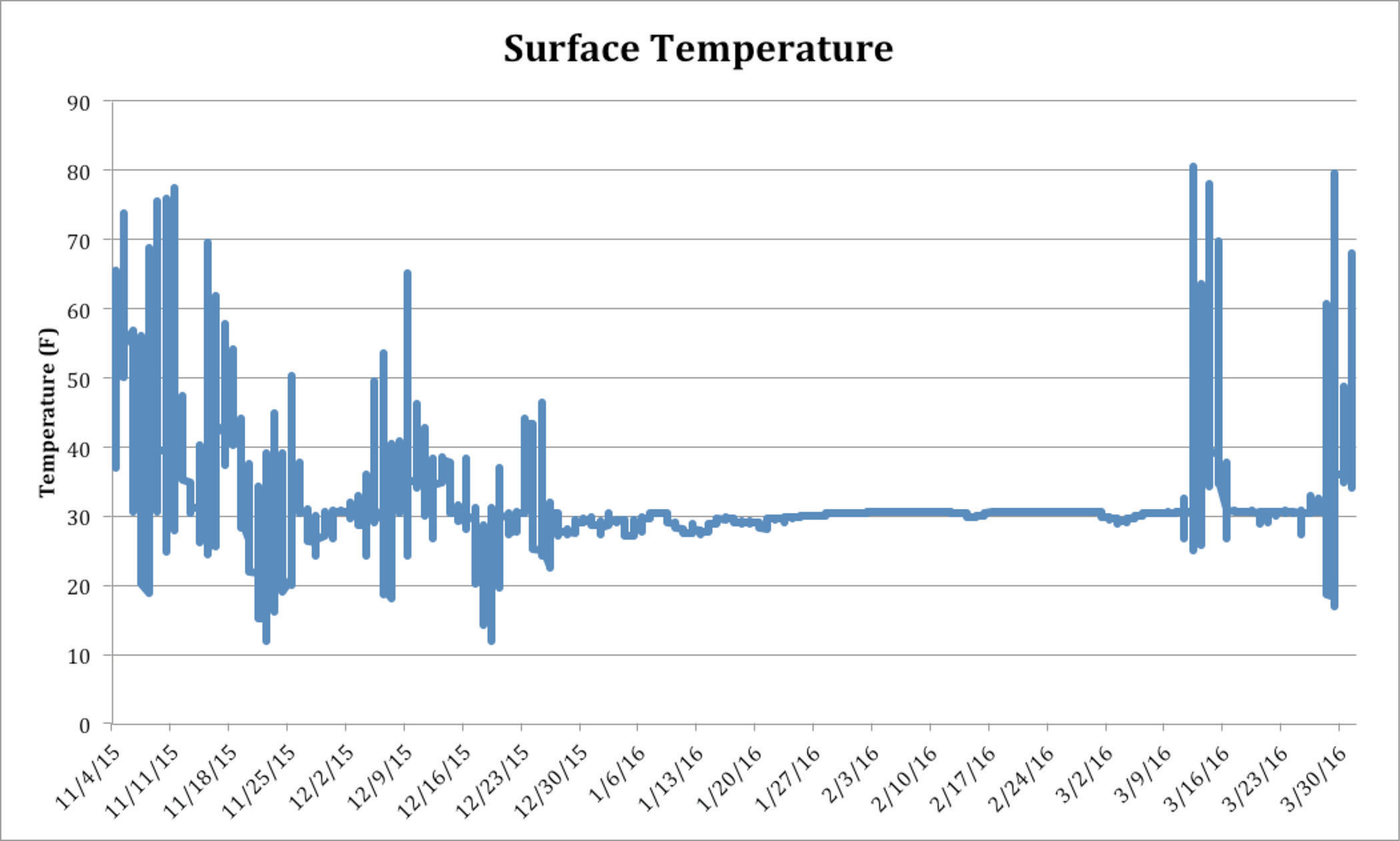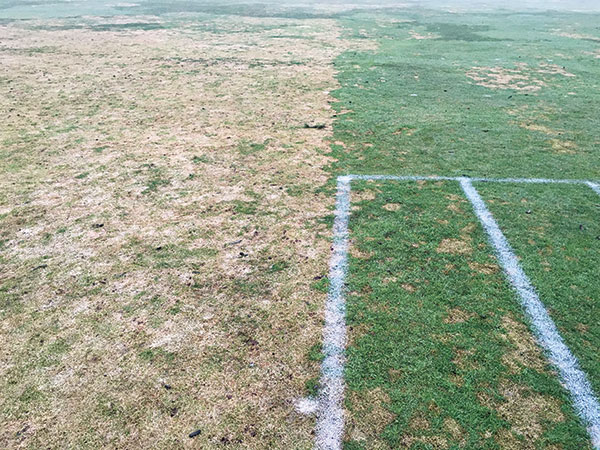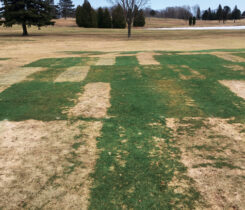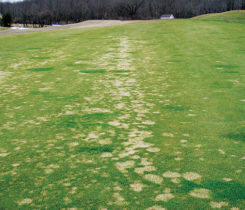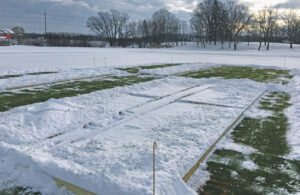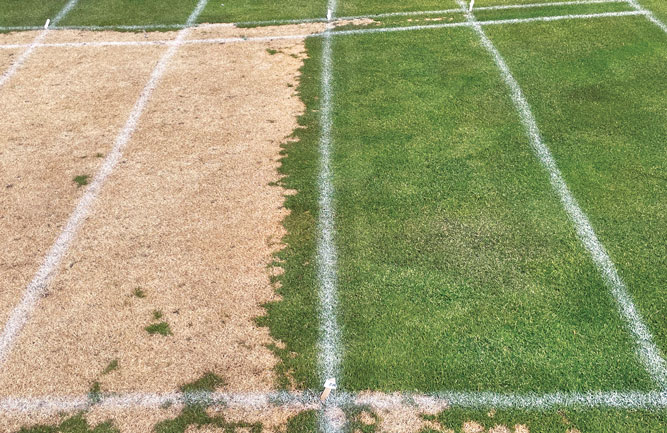Snow mold lessons learned from last winter
The winter of 2015-2016 can best be described as unusual, whacky, zany, goofy or any other words that imply it was abnormal for most of the northern United States.
December had record-breaking warmth for most locales, and frequent heavy rainfall events made the month feel more like October. These conditions led to widespread discussion about whether to reapply snow mold fungicides. While many superintendents reapplied these fungicides to putting surfaces and tees, the majority did not.
Our recommendation from the University of Wisconsin was to base reapplication decisions on the amount of risk superintendents were comfortable taking. Though our past research clearly shows that warm winter temperatures and rainfall events rapidly degrade snow mold fungicides, we didn’t expect widespread snow mold in 2015-2016 because of the El Niño forecast.
Because El Niño winters traditionally result in reduced snowfall in the Midwest, we advised that most superintendents likely would see little snow mold breakthrough, and a reapplication would not be warranted. However, superintendents who believed the risk of snow mold developing on their relatively unprotected turf was more than they were willing to bear were encouraged to make additional applications in December. Snow mold largely was absent for both groups, validating the decision by those who didn’t reapply.
If a reapplication wasn’t needed this past winter, will one ever be warranted? One of the benefits of conducting research is that we can experiment without fear of retribution from angry golfers, owners or GMs when the experiment fails and the plots are littered with disease. Our 2015-2016 snow mold trial at Marquette Country Club in Marquette, Mich., provided an excellent test of 100 different fungicide treatments and how they would perform when exposed to a month of exceptionally warm and wet weather followed by two months of highly conducive snow mold conditions.
The trial at Marquette Country Club
The trial at Marquette CC included 100 different fungicide treatments. Each treatment was applied in 1.5 gallons of water per 1,000 square feet on Nov. 3, 2015. From local weather records and our Spectrum Watchdog data logger placed on the plot, we know that temperatures in Marquette were well above average in November and December and that numerous rainfall events occurred between the application and the beginning of 2016 (Figure 1).
Based on the horizontal temperature line from Figure 1, we also know that a deep and insulating snow cover was present on site from Jan. 1, 2016 until mid-March, a duration of just more than 60 days. We assessed disease severity, turf quality and turf color following snowmelt on March 31, 2016. For the full report from this and other trials, please visit the University of Wisconsin’s Turfgrass Diagnostic Lab research page.
The two months of snow cover on unfrozen ground at Marquette provided optimal pink snow mold conditions, and the non-treated control plots averaged 84 percent disease (Figure 2). However, there also were numerous treatments that performed exceptionally well under trying circumstances. Every treatment except for one lowered disease relative to the non-treated control, and 12 treatments provided more than 95 percent control (Table 1). Numerous additional treatments provided excellent control of 90 percent or more. Of those providing excellent control, most included a mixture of two, three or four active ingredients. In many cases, one of those active ingredients was chlorothalonil in the form of Daconil WeatherStik.
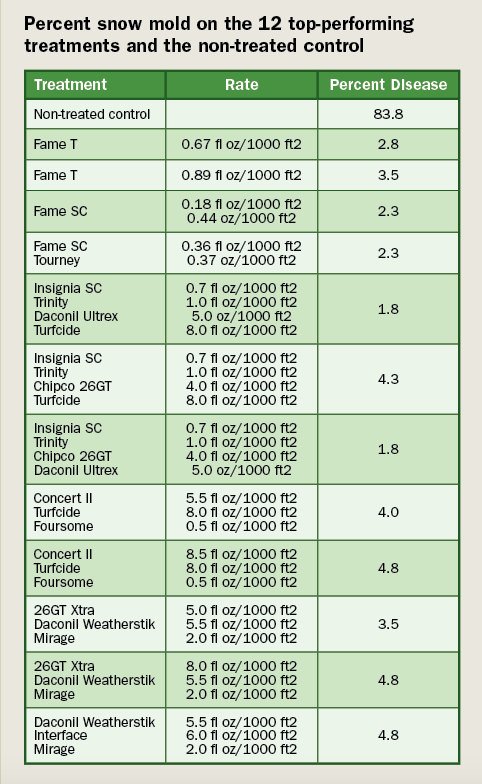
Table 1Percent snow mold on the 12 top-performing treatments and the non-treated control from the research trial at Marquette (Mich.) Country Club during the winter of 2015-2016. For full trial results, please visit the University of Wisconsin’s Turfgrass Diagnostic Lab research page.
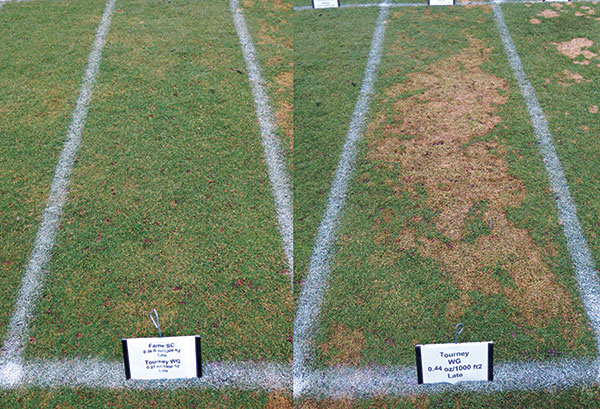
Figure 3 Tank-mixing Fame SC and Tourney provided excellent snow mold suppression at Marquette CC in 2015-2016, though Tourney applied on its own was ineffective.
Research from our work and others has long shown the importance of fungicide mixtures in adequately suppressing snow mold in high-pressure areas, and this trial was no different. Fame plus Tourney (fluoxastrobin plus metconazole) performed exceptionally well, but Tourney (only metconazole) did not (Figure 3). Interface (iprodione plus trifloxystrobin) and Mirage (tebuconazole) tank mixed together provided excellent snow mold control, though both Interface and Mirage on their own did not (Figure 4).
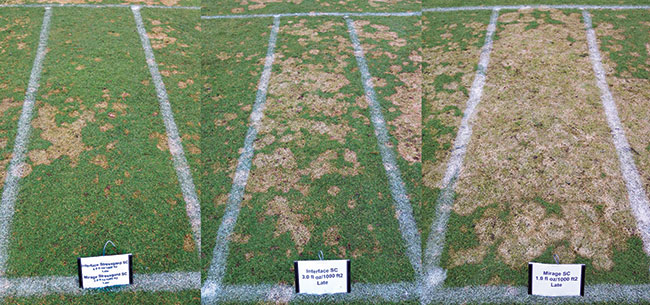
Figure 4Combining Interface and Mirage was highly effective at suppressing snow mold at Marquette CC in 2015-2016, but protection broke down when either one of the products was applied alone.
These results demonstrate that mixtures provide improved snow mold control even when warm temperatures and heavy rains occur following application. This improved control likely is due to an increased inhibitory effect on the fungus rather than an extension of fungicide persistence. So even if your snow mold fungicide mixture is washed away a week after you apply it, our results suggest that it still had an impact on the fungus and likely will provide at least some level of disease suppression relative to non-treated areas, no matter what the winter entails.
As mentioned above, mixtures including Daconil WeatherStik (i.e. chlorothalonil) performed better than similar mixtures not containing chlorothalonil. This is not universally true, but a quick look at Table 1 shows that seven of the 12 best performing treatments included chlorothalonil.
While there aren’t hard facts supporting why this might be the case, one possible explanation is that chlorothalonil products may be more persistent in variable winter weather. The solubility of chlorothalonil in water is 0.81 mg/L, which is extremely insoluble. For comparison’s sake, the solubility of iprodione in water is 13 mg/L. So even though chlorothalonil alone is not an exceptional fungicide against pink snow mold, its ability to persist on the turf leaf blade during winter rains and snowmelt a little longer than other active ingredients may contribute to improved snow mold suppression.
Implications for you
How do the results at Marquette Country Club in 2015-2016 relate to the decisions being made at your facility?
The bottom line is that snow mold applications can still provide prolonged snow mold suppression, even if they are degraded shortly after application by rainfall and warm temperatures. While seemingly contradictive, this is true because most snow mold fungi grow slowly, even in optimal conditions. If stunted by a fungicide in the fall, the fungi likely will require prolonged time to recover.
If weather conditions aren’t ideal for fungal growth they may never recover to the point of symptom development, even when the fungicide is no longer present. However, if conducive snow mold conditions persist for a prolonged period after fungicide degradation, it’s likely the fungus eventually will recover to the point of infecting the plant and producing symptoms.
So what did last winter teach us about the need to reapply snow mold fungicides following record warmth and frequent rainfall? The answer will be based on your location, the historical level of snow mold observed, the expectations of the club and the level of risk you’re willing to take during the winter months.
The majority of superintendents won’t have to reapply. As discussed above, the initial fungicide application will severely stunt fungal growth and provide enough suppression for most superintendents. However, if you 1) live in a snowbelt that traditionally experiences lots of snow mold, or 2) are hosting a spring event or otherwise can’t tolerate any springtime symptoms, or 3) you’re just going to sleep better during the long, cold winter if you reapply… then a reapplication is warranted.
Paul Koch, Ph.D. is an assistant professor in the department of plant pathology at the University of Wisconsin-Madison. He can be contacted at 608-262-6531 or plkoch@wisc.edu.
Acknowledgements
I would like to thank the superintendents who hosted snow mold trials for us in 2015-2016: Craig Moore, Marquette CC, Randy Slavik, Wausau CC and Eric Leonard, Cherokee CC.
photos by: Paul koch






